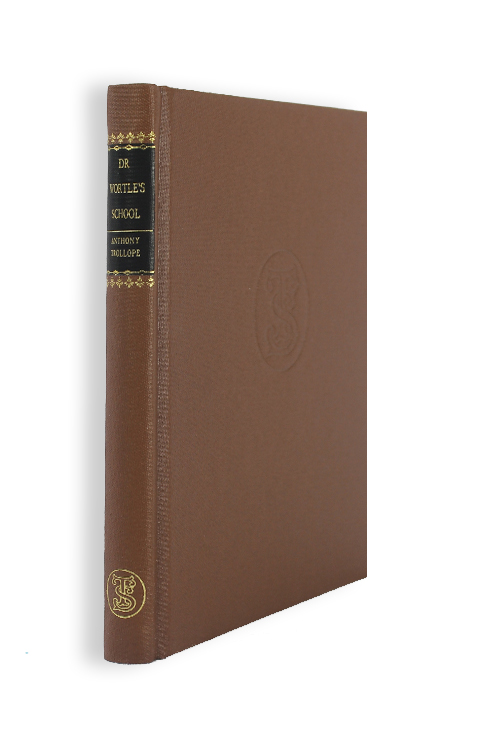Dr Wortle’s School
£25.00
Available to members only
Introduction by Dr John Rae
199 pages
London, Chapman and Hall, 1881. 2v.
Originally published in Blackwood’s Magazine, May-Dec. 1880.
Out of stock
The Revd Jeffrey Wortle, DD, was a man much esteemed by others and by himself.
So Trollope introduces us in the opening sentence of this novel to its most important character. Dr Wortle combines the profession of a successful private schoolmaster with the normal parishional duties of a parson. No doubt it is that comfortable extra income which gives him the robust spirit of independence which imbues all his dealings with the successive Bishops of Broughton; of whom he has a low opinion.
As the novel starts, he has been looking, in order to enlarge his school, for a qualified, competent married assistant: and by a stroke of luck, one comes his way from five years’ teaching in America, equipped with impeccable credentials from Oxford; and a beautiful American wife. Or so it seems. For the only thing wrong with this paragon of a couple is that man and wife they are not. Bluntly, in the middle of the third chapter, Trollope tells us so.
Our interest is to lie in the way the Doctor and his wife, the Bishop, and the boys’ parents react to what is first an ugly rumour and then is taken to be fact. Scandal spreads; newspaper reports fan the flames; and the school slowly empties of its pupils. But Dr Wortle remains loyal to the Peacockes, though threatened with financial ruin. Even when he is forced to contemplate closing his school altogether, he cannot compromise. ‘Will it make you very unhappy?’ asks his wife. ‘No doubt it will’, replies he, ‘a man does not like to fail’.
The denouement, like so many of Trollope’s plots, is wrapped in the mysteries of bigamy and legitimacy in foreign parts. Trollope wrote this novel in a comfortable rented country rectory. His surviving letters suggest the august setting not only induced him to imagine himself as a real Rector, dealing with titles, and parishioners and Bishops and curates, but to give us something very close to his own version of a self-portrait.
